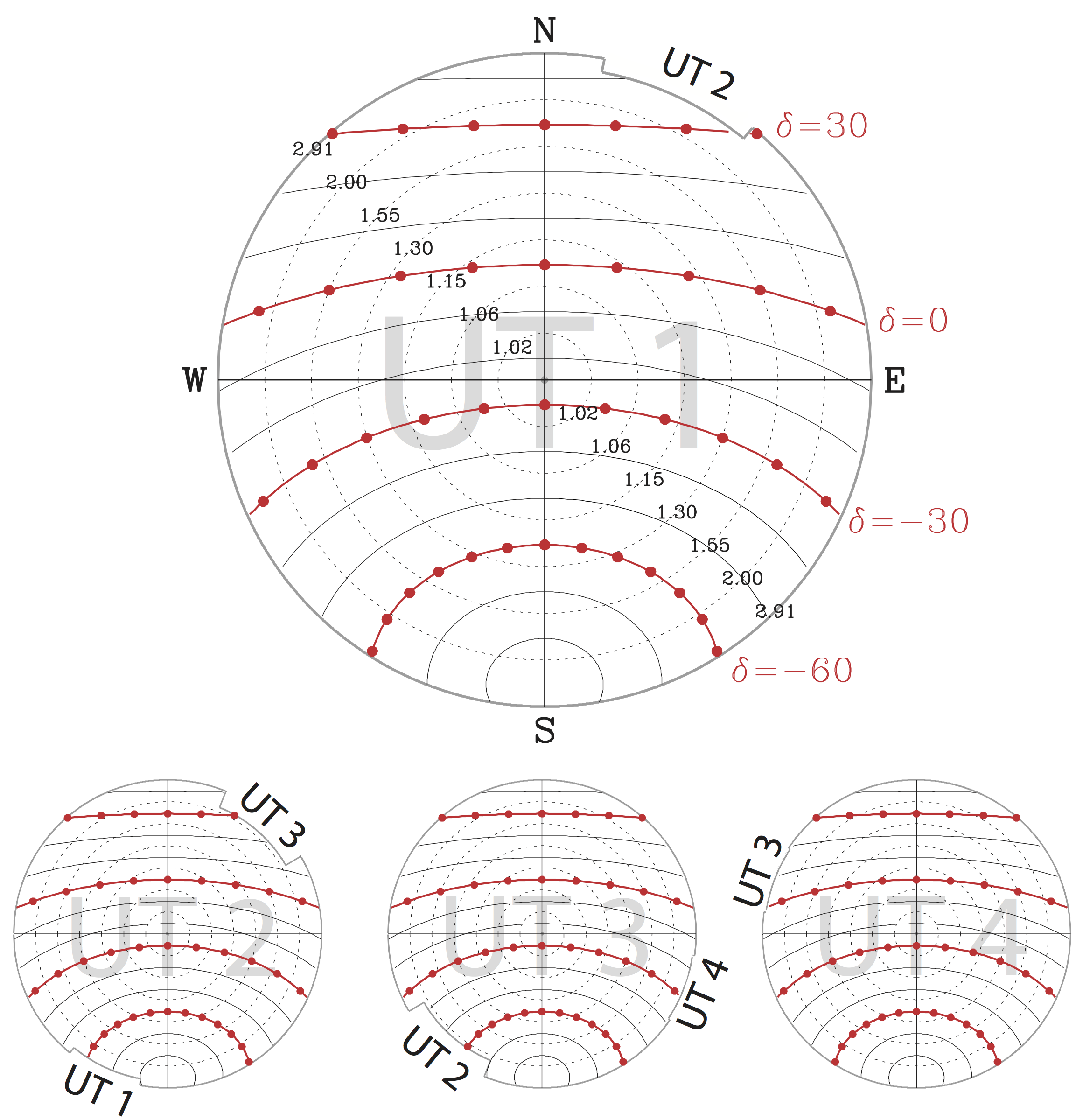Sky accessibility
The closeness of a UT relative to another implies a small limitation of its sky accessibility compared to what is allowed from the technical safety point-of-view. 
The maps above (available in pdf or PNG version) illustrate the area of the sky accessible by each UT without being affected by vignetting due to the dome of another telescope: the outermost circle marks the telescope safety limit (zenith distance 70 degrees). Concentric circles denote zenith distance intervals of 10 degrees and are marked with the corresponding airmass value. An object will move along a curves of constant declination, with solid dots marking movement in 1-hr interval. The maximum visibility period of an object can be read directly by counting intervals between dots. The smaller plots (for UT2, UT3 and UT4) are identical, only the vignetting due to neighbouring domes vary.
Table of Content
- The VLT 8.2-m Unit Telescope
- VLT Environmental Specifications
- The VLT primary mirrors
- The VLT Primary Mirror Cooling System
- The Secondary Mirror, M2 Unit
- The M1 Cell and M3 Tower
- The VLT Active Optics System
- The VLT Adapter-Rotators
- VLT Cassegrain Adapter-Rotators
- VLT Nasmyth Adapter-Rotator
- Very Large Telescope Enclosure
- VLT Technical CCD System
- Coating Unit
- Sky Accessibility
- UT Performance
